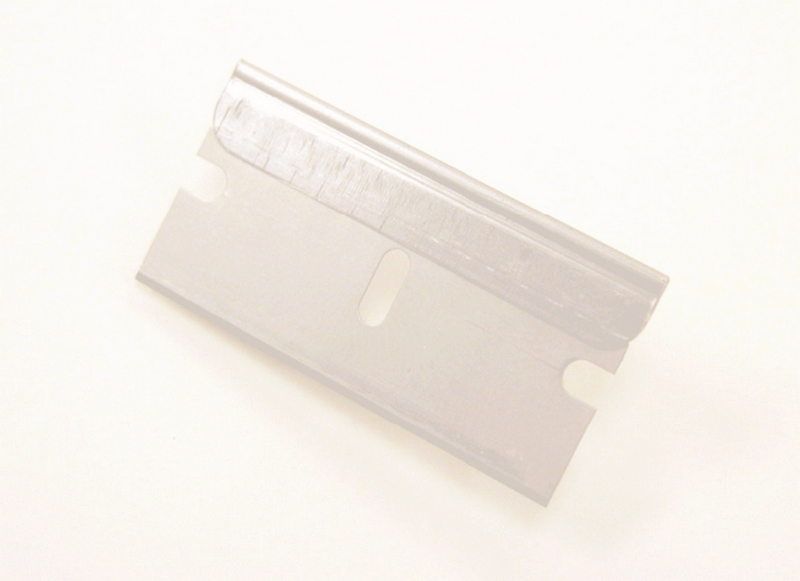
by Tom Pawlak — GBI Technical Advisor
Necessity is the mother of invention, and razor blades are often called into service for a variety of tasks around the shop other than shaving. Here are a few.
Mini-Spreader
Razor blades can be used in a pinch to apply caulks and thickened epoxies with great precision. They do a great job filling isolated pinholes and scratches, especially when the blade is laid at a low angle (nearly flat) when spreading the putty.
Mini-Scraper
Sharp razor blades can be used as cabinet scrapers. Use with the blade on edge at 90° or so to the surface. Scrape off small imperfections like drips and dirt specks in cured/dried coatings before buffing or final sanding.
Dull Razor Blades Make Useful Tools
Everyone knows how handy sharp razor blades are for removing dried paint from windows. But single-edge razor blades can be modified for removing cured epoxy and dried paint drips on surfaces that are less scratch-resistant, like gelcoat, Formica™, and other plastic laminates.
The trick is to dull the razor blade slightly with 600-grit sandpaper.
Round the corners at each end of the blade at the same time. Then, try the blade on an inconspicuous spot to be sure it does not scratch the surface.
The edge of the blade acts as a very thin wedge. It works best if you start at the end of the drip which is the thinnest. If you can get a peel started, you can usually get the drip off without damaging the gelcoat, Formica™, or well-dried painted surface.
The razor blade will remove all but the most stubbornly adhered drips of hardened epoxy or dried paint.
When we were production building the Gougeon 32 sailboats, we found dulled razor blades remarkable for removing drips of cured epoxy from gelcoated surfaces. Even cured epoxy smudges often came off. Without this tool, we were forced to sand off the hardened drips and buff back the shine, which was time-consuming work.
A dulled razor blade also works great for removing old bathtub caulk on fiberglass tub and shower surrounds without damaging the gelcoated surfaces. Be sure to try the dulled blade on an inconspicuous spot to verify that it isn’t scratching the surface. If the blade gets a little rough on the edge, run it over the 600-grit paper and smooth it out again.





